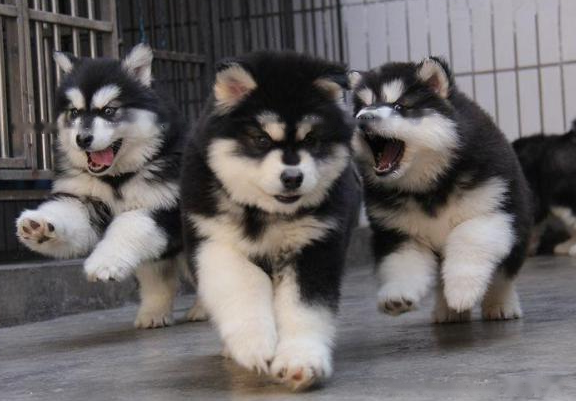We only know that they have lived in Alaska sled dogs for many years, but we don’t know where they came from, just as we don’t Know where the other arctic natives come from. Writers who study the formation of the Arctic Circle are well-informed, and they disagree on the origins of indigenous peoples within the Arctic Circle. We call the sled dogs in the Arctic Circle today the Alaskan Malamutes.

Shopping taboo: blue eyes.
When it comes to judging an Alaskan Malamute, whether it's up to the task of pulling a heavy sled in the poles is the most important point. When considering deviations from the standard, first measure whether and to what extent it affects the work. The Alaskan Malamute must have strong limbs. Any imperfection, whether in the forelimbs or hindlimbs, whether walking or standing, is a serious defect. Open feet, bull-like hocks, weak front and rear heels, straight shoulders and lack of angle, stilt-like gait, or any unbalanced, unsteady gait, bones that are too light or heavy, poor body proportions Coordination is a disadvantage.
Alaskan Malamute Size, Proportion and Structure
Individuals vary in size. The ideal height of a male dog is 63.5 cm, and the ideal weight is 38.56 kg; the ideal height of a female dog is 58.4 cm, and the ideal weight is 34.02 kg. But the overall shape and quality of the dog is more important than body shape. If the other aspects of the dog are similar, those close to the standard weight are ideal. The depth of the chest is about half the height of the dog. The body is slightly longer than the height. Bone weight in proportion to body formation.
Head
The head is wide and deep, in proportion to the size of the body. The expression is gentle and affectionate. Eyes slanted. The eyes are brown, almond-shaped, and medium in size. Darker eyes are preferred. Blue eyes are a serious flaw. The ears are medium in size but small compared to the head. The ears are triangular with slightly rounded tips. The distance between the two ears is large, and the upper corner of the eye is in a straight line. When the dog is on alert, the ears are erect. The erect ears are slightly curled forward. The high position of the ears is a disadvantage. The skull is broad, slightly rounded between the ears, flat and narrow near the eyes. There is a dent between the eyes. The muzzle is broad, tapering from the base to the tip of the nose. The nose, lips and eye sockets of dogs with coats other than red are black. Red-coated dogs can be brown. Lips closed. The upper and lower jaws are broad and the teeth are large. Scissor bite. Prominence of the upper and lower jaws is a disadvantage.
Neck, topline and trunk coat
The outer coat is thick, coarse, not too long or too soft. The lower layer is densely woolly, 2.5 to 5.1 cm long, like wool. The length of the undercoat and the topcoat is not uniform across the body. The coat is shorter on the sides of the body, longer on the shoulders and neck, and longer on the underside of the neck and rump. The summer coat is short and dense. The coat should be kept in its natural state, and the coat on the feet can be properly trimmed.
Color
Can be from light gray to black, red. The undercoat can have a mix of colors. A solid white coat is the only acceptable solid color coat. The lower part of the torso, parts of the limbs, the feet and the face should be white with patches. Vitiligo on the forehead and neck or on the back of the neck are more attractive. The color breaks in the centerline of the head and back are not ideal.
Alaskan Malamute gait
Stable, balanced, and powerful. The gait is agile relative to size. Viewed from the side, the hindquarters are very powerful and the power is transmitted from the waist to the front. Viewed from the front or back, the front and rear limbs on the same side advance in a straight line. As the speed increases, the limbs land on the centerline of the body. A stilt-like gait or a weak gait is a disadvantage.
![[Dog Training 5] The training method of pet dog dining etiquette](/static/img/12192/12192_1.jpg)




